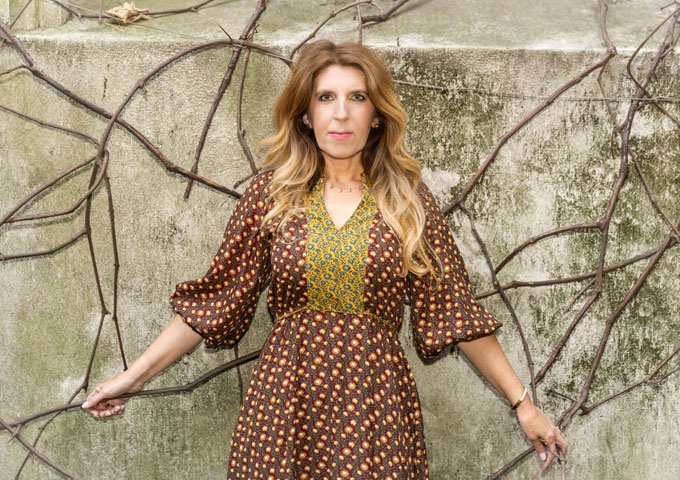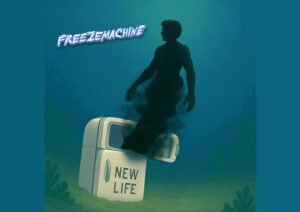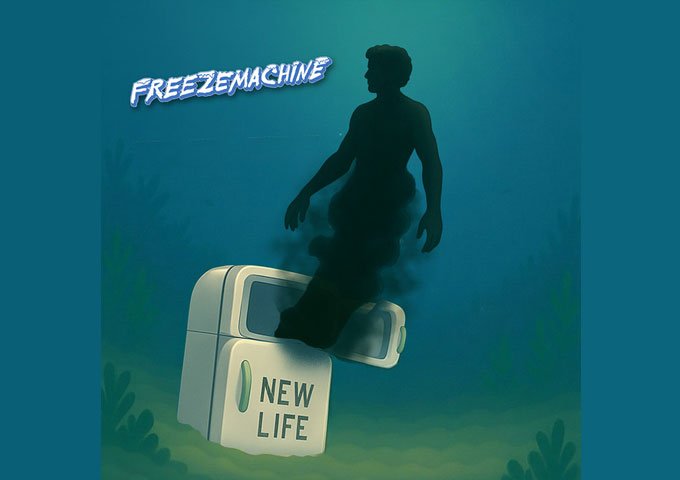Marsha Swanson’s “Generational Transmission” stands as a profound meditation on the cycles we inherit – and the courage it takes to break them. Paired with an extraordinary claymation film by acclaimed Iranian filmmaker Sam Chegini, this release – out since September 12th on YouTube – is a triumph of cross-cultural collaboration, artistic empathy, and emotional intelligence. Together, Swanson and Chegini transform one of the most complex human experiences – intergenerational trauma – into an immersive journey of sound, story, and symbolism.
The single, taken from Swanson’s critically acclaimed album “Near Life Experience,” deepens the record’s exploration of mortality, memory, and legacy. Yet where much of the album reflects on the fragility of life, “Generational Transmission” focuses on the shaping hands of ancestry – the invisible lines that draw us toward or away from healing. Produced by Iestyn Polson (known for his work with David Gray, Patti Smith, and David Bowie) and recorded at Konk Studios in London, the track’s sonic landscape is both intimate and vast. It balances the tenderness of confession with the grandeur of orchestral reflection, a musical embodiment of the inner and outer worlds we navigate in pursuit of wholeness.
Musically, “Generational Transmission” is deceptively simple at first glance: a piano-led composition that blooms into a sweeping, cinematic arrangement. But beneath its elegance lies deep structural sophistication. The instrumentation breathes with restraint – Swanson’s delicate keyboard motifs echo through open space, leaving room for her voice to inhabit its full expressive range. The production feels organic, almost lived-in, as though each note carries the weight of memory.
Swanson’s vocal performance is remarkable for its balance between vulnerability and resolve. Her phrasing – gentle yet deliberate – invites the listener into her introspection. There’s a clear sense of self-confrontation in her delivery, especially in the repeated phrase, “Oh, the patterns show / I want you to know / So you won’t be thrown.” It’s not merely sung; it’s offered like an ancestral prayer, an act of acknowledgment and protection. Her tone conveys both the ache of recognition and the hope of change.
The rhythm and harmony work together to reflect the song’s central tension – between continuity and transformation. Each modulation feels like an emotional turning point, capturing the complexity of inherited emotion: how love and pain can coexist within the same lineage, the same DNA. The strings, arranged with exquisite empathy by Henry Thomas, envelop Swanson’s voice like the intertwining threads of family itself – sometimes soothing, sometimes suffocating, always intertwined.
At the heart of “Generational Transmission” is Swanson’s lyrical gift: her ability to translate the language of psychology into poetry without losing its emotional rawness. The song opens with self-reflection – “Tuning up to be the best I can for you / Owning up to be the best I can for me” – a declaration that healing is not only an inward act but one that reverberates through generations. It’s the voice of someone who recognizes that love, even with the best intentions, can carry the residue of the past.
When she sings, “I’m limited by my biology / I’m limited by my family,” Swanson encapsulates a truth both scientific and spiritual. It’s a rare moment in modern songwriting where genetics, psychology, and art converge. Yet she doesn’t stop at acknowledgment – she moves toward transformation. The chorus, with its refrain “Oh, the patterns show,” functions as both lament and liberation. The repetition mirrors the cycles of behavior families often relive, while her voice, breaking through the loop, becomes the instrument of change itself.
Perhaps the song’s most piercing line asks, “How many generations does it take to dilute a trauma that’s gone on?” It’s a question without an easy answer – and that’s precisely its power. Rather than offering closure, Swanson leaves space for reflection. The listener becomes part of the dialogue, compelled to consider their own lineage, their own unspoken inheritances.
In Sam Chegini’s claymation interpretation, “Generational Transmission” becomes a tactile metaphor for the human condition. Each clay figure – most notably the protagonists Clayton and Clayopatra – embodies the malleability of the self. They carry the fingerprints of every generation before them, molded and remolded, yet never entirely free from what came before. Chegini’s decision to use clay as the medium is inspired: it literalizes Swanson’s lyrical themes. Clay bears the marks of every touch, just as humans bear the imprints of those who raised and shaped them.
Chegini, whose career spans acclaimed collaborations with Jethro Tull, Chris de Burgh, and Lenny Henry, brings his signature fusion of classic craft and modern storytelling to the project. His visual world is rich with metaphor – the merging colors of clay symbolizing ancestral convergence, the cracks representing the fractures within family narratives, the act of reshaping suggesting the conscious work of healing.
The animation’s pacing is deliberate, even meditative. Each movement unfolds like a breath, inviting viewers to slow down and witness the process of evolution. In a media landscape defined by immediacy, “Generational Transmission” dares to be patient. It is art that rewards attention, revealing new emotional layers with each viewing.
What makes the Swanson–Chegini partnership extraordinary is its emotional coherence. Every frame of the video, every bar of the song, feels like an extension of the same heartbeat. Swanson’s words and Chegini’s visuals don’t merely coexist – they converse. Together, they construct a sensory experience that transcends geography and genre. This is not a story limited to one culture; it is a universal human reckoning.
Behind the seamless artistry lies immense dedication. Chegini and his Iranian team created the film under extraordinary conditions, working at 15 frames per second over three months amid blackouts and the turmoil of a regional war. Their perseverance mirrors the song’s own themes of endurance and transformation. Meanwhile, Swanson, from her home in England, maintained a creative dialogue that bridged continents, cultures, and even crises. The result is a testament to the unbreakable thread of artistic connection.
Marsha Swanson, who previously won Best Folk Artist and Best Album at the Glasswerk New Music Awards, approaches her art with an almost scholarly sensitivity – unsurprising, given her background in psychology and her lineage tracing back to Gustav Mahler. Yet her intellectual precision never overshadows the visceral heart of her work. “Generational Transmission” is not academic; it is deeply human.
Her reflections on her own family – immigrant roots marked by persecution and silence – inform the emotional landscape of the song. The trauma of displacement, inherited grief, and the quiet resilience that follows are all woven into its fabric. But ultimately, Swanson’s message is one of empowerment. “It matters to me personally to understand more about my behaviours and tendencies,” she says, “where they originated from and what I can do about them.” In that statement lies the essence of the song: awareness as the first step toward freedom.
“Generational Transmission” is a mirror held up to the human lineage. It asks us to look – really look – at the patterns that shape us, and to choose which we wish to keep. It is at once personal memoir and collective hymn, a rare fusion of music and psychology rendered through art and empathy.
Swanson’s voice, both literal and creative, becomes the vessel through which pain transforms into understanding. Chegini’s claymation turns that understanding into something tangible, something we can see, touch, and feel. Together, they remind us that though we may be molded by the past, we are never permanently fixed within it. Like clay, we can reshape ourselves – and, in doing so, reshape the generations that follow.
With “Generational Transmission,” Marsha Swanson and Sam Chegini have not merely created a music video. They have sculpted an experience – a living, breathing testament to the beauty of conscious evolution, and to the unending dance between what we inherit and what we create anew.
OFFICIAL LINKS: https://www.marshaswanson.com/














+ There are no comments
Add yours